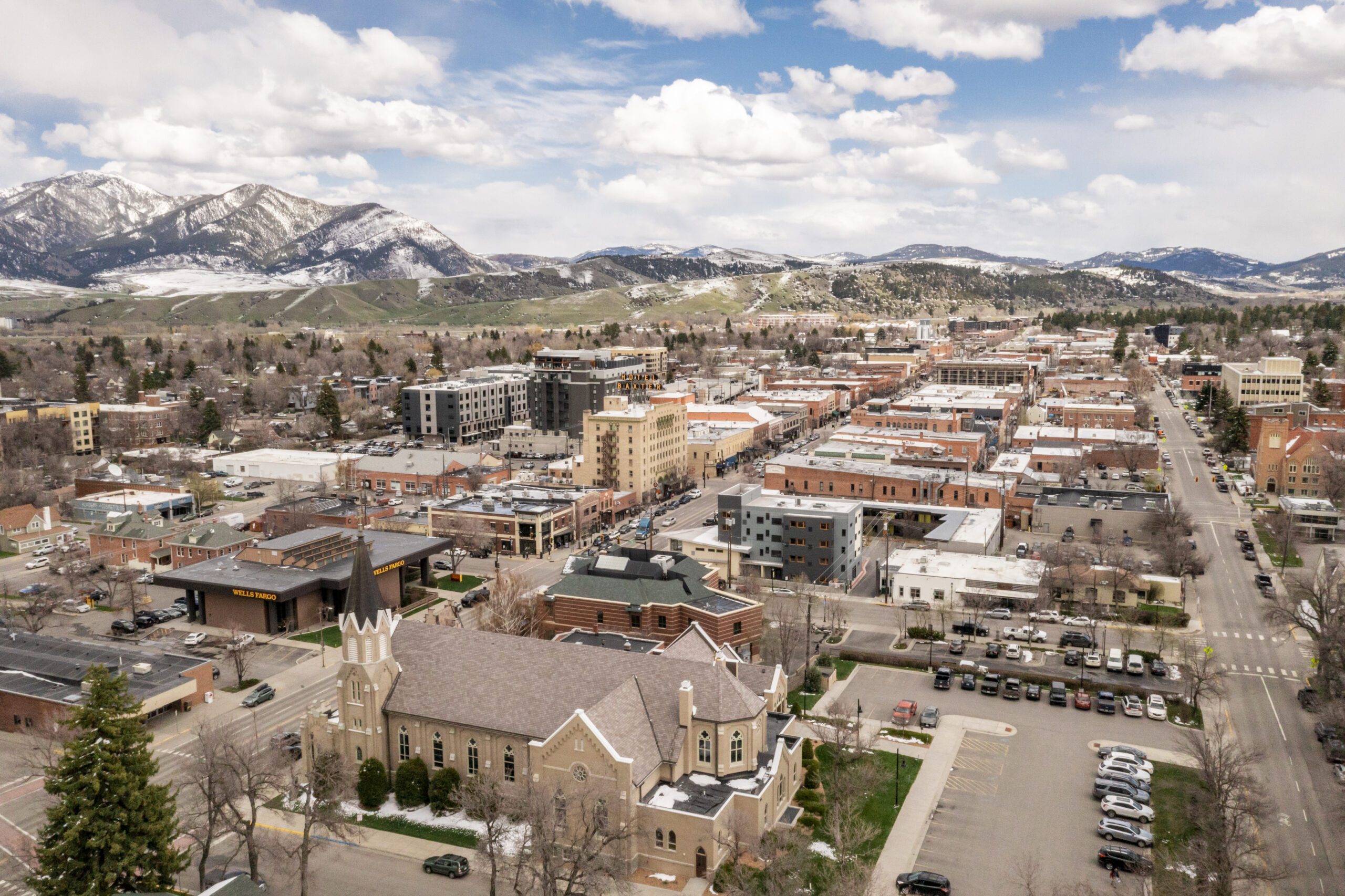By Jessianne Castle EBS Contributor
BOZEMAN – A new blanket of snow covered the trees and towering cliffs of Gallatin Canyon when Bozeman Area Wildlife Biologist Julie Cunningham started taking tallies, seated in a fixed-wing plane earlier this winter. With light winds and a temperature of 17 F at takeoff, conditions were ideal for spotting elk.
Cunningham flew with a pilot over the timbered ridges and open meadows south of Big Sky, looping from Porcupine Creek south to Specimen Creek and then east to Taylor Fork and back north to Big Sky. She counted 636 elk, the most recorded in the area during the annual winter flight in over a decade. Cunningham also counted 14 moose and 15 mule deer, both of which were increases from past counts.
During the flight, Cunningham attempted to classify elk and record whether they were cows or bulls, however this was somewhat limited due to the heavily timbered area. She was able to spot at least 70 bulls, indicating that the bull-to-cow ratio aligns with the 10 bulls to 100 cows minimum management criterion. She said further ground-based assessments will occur throughout the remainder of the winter to determine calf-to-cow ratios.
Flight counts from the past five years indicate that the Gallatin Canyon elk population is trending upward, but there are still fewer elk than wildlife officials would like. In the area that includes Taylor Fork and Porcupine Creek, and extends south to Yellowstone National Park, Cunningham says she’d like to see 1,500 individuals on the landscape. This number was determined based on the carrying capacity for the winter range, and is also the approximate average of elk counts between the 1940s and 1980s.
“The story of the Gallatin elk is a long one and an imperfectly understood one,” she wrote in an email to EBS. During the last three decades, the area’s elk have seen the reintroduction of wolves and a steady increase in the number of grizzly bears.
“Concurrently, the Madison Valley land ownership patterns changed and elk refuges were created over on that side where they had not existed before,” she added. “Since the earliest days of radio collars—1970s-1980s—elk always migrated between the Gallatin and Madison as the winter conditions suggested, often in January or February, or not at all. Now, elk seem to move early, as early as September, to the Madison Valley and places that are difficult for hunters to access.”
Cunningham also pointed to growth in Big Sky. “I am seeing elk using the Big Sky subdivisions in some number, more than has been seen in prior years,” she said. “I hypothesize elk are enjoying the shrubs and grass planted by homeowners, as well as enjoying the ‘human shield’ from four-legged predators, as well as exploiting refuge from hunters.”
Lee Hart, owner of Broken Hart Ranch located three miles south of Gallatin Gateway, said he’s seen changes in the elk migration patterns first-hand. Born and raised in the area, Hart has operated as a hunting outfitter on National Forest land in the Gallatin drainage for 50 years. “Way back when I originally started, there were lots of elk,” he said. “I was the [only] permitted outfitter in some of the prime hunting of the state.”
Following the 1995 reintroduction of wolves to Yellowstone, Hart said he began to notice a change, agreeing with Cunningham that elk started moving into the Madison earlier. He also believes cow elk were losing their calves perhaps due to predators, after seeing many small groups without offspring.
“They just kept dwindling,” he said. “It got so bad, I actually had to quit booking hunters. You can’t do justice as an outfitter claiming you’re taking them on an elk hunt. … It’s hard to operate that way. I’m there to give guests an opportunity to harvest an animal, but it’s gotten so that I feel sorry for those elk.”
While Hart was spotting fewer elk in the Gallatin, he began to see more elk making their way onto his alfalfa fields in the southern part of Gallatin Valley where the pressure from predators is less. “They’ve become urbanized elk. They don’t go back to the mountains, they stay in the subdivisions,” he said. “There they lay all day long, smiling at cameras. … The people that are coming here now don’t know the background of what it used to be like.”
In recent years, with the Gallatin population beginning to slowly recover, Hart has had a few successful elk hunts, though he says they were pretty tough.
According to Cunningham, it’s unclear exactly why Gallatin’s elk population is beginning to trend back up.
“I can’t say anything for a fact, but there are many possibilities,” Cunningham said, adding that several hypotheses include the elk’s response to habitat-improvement projects or to the generally light winters and good growing seasons we’ve had recently. It could also be a result of conservative management policies, such as completely limiting the harvest of cow elk in the area south of Big Sky for more than 10 years. “Perhaps even wolf hunters and trappers have reduced or changed local wolf dynamics, which could have influenced the herd. Perhaps [it’s] some combination of all of this,” she added.
On top of it all, Cunningham said she could be getting better at flight counting after elk behavior changed following the cessation of logging in the 1990s. Once timber sales halted, the forests grew thicker and elk began to forage in smaller groups distributed in the denser timber, becoming difficult to spot from the air. “It’s harder to see two cow elk hiding than 20 cow elk hiding,” she said. “Perhaps your biologist is getting better at flying and counting as she gets more experience.”
As Cunningham and other state biologists with the Montana Department of Fish, Wildlife and Parks continue to monitor the trends in the Gallatin elk population, they will adjust management policies accordingly, though for the meantime, Cunningham said she will continue to support conservative management in this district.
Visit fwp.mt.gov/fishandwildlife/management/elk for more information about Montana’s statewide elk management plan.














